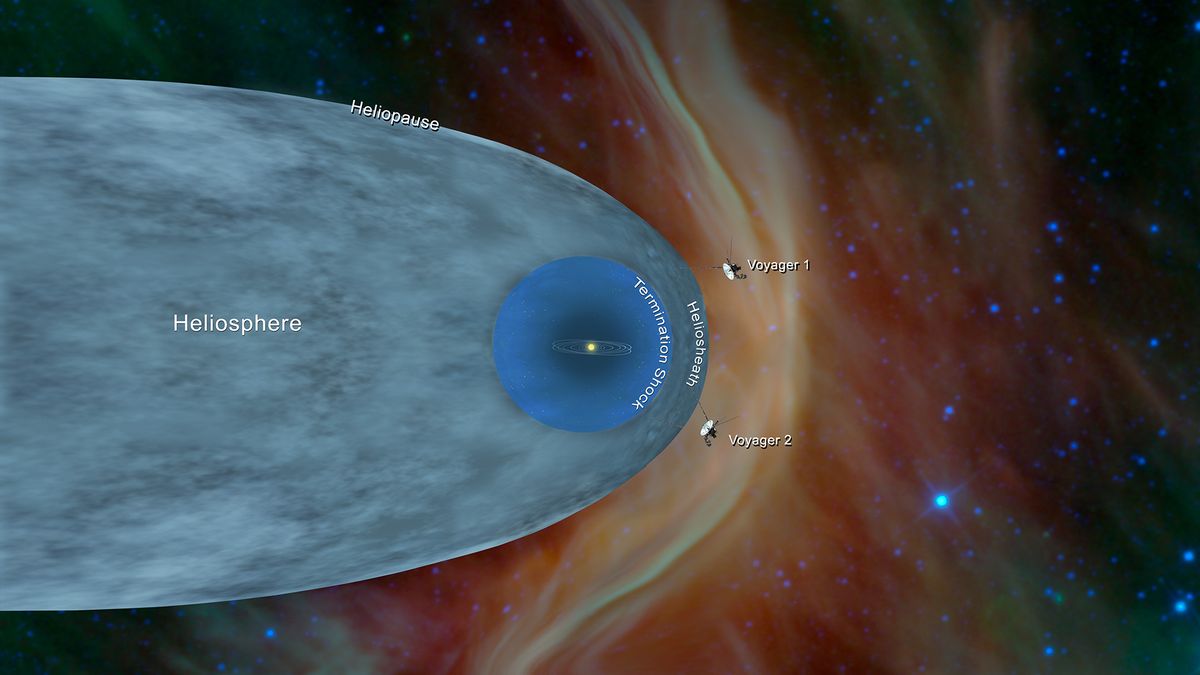NASA engineers have shut down one of Voyager 2’s science instruments due to the spacecraft’s power supply dwindling as it explores interstellar space.
Voyager 2 launched into space on August 20, 1977 and left the solar system on November 5, 2018. It is currently 12.8 billion miles (20.5 billion kilometers) from Earth and is using four science instruments to study space beyond the heliosphere, bubble of the influence of the sun around the solar system. NASA thinks Voyager 2 has enough power to keep a science instrument running well into the 2030s, but doing so requires choosing which of its other instruments need to be turned off.
Mission specialists have tried to delay shutting down the instrument until now because Voyager 2 and Voyager 1 are the only two active probes that humanity has in interstellar space, making any data they collect unique. So far, six of the ship’s initial 10 instruments have been disabled. Now, the loss of the seventh has become inevitable, and the spacecraft’s plasma science instrument drew the short straw. On September 26, the engineers gave the command to shut down the instrument.
The plasma science instrument consists of four “cups” that collect information on the amount of plasma, a fluid of charged particles, flowing past Voyager 2 and the direction of that flow. Three glasses are tilted toward the sun, monitoring charged particles in the solar wind as they enter the heliosphere. A fourth cup is angled away from the others to observe plasma in planetary magnetic fields and interstellar space.
Related: Voyager 1 is back on line! NASA’s most distant spacecraft returns data
This instrument was crucial in detecting the fall of charged particles from the Sun, which indicated that Voyager 2 had crossed the boundary between the heliosphere and interstellar space in 2018.

“Mission engineers are always carefully monitoring changes being made to the 47-year-old spacecraft’s operations to ensure they do not generate unwanted side effects,” officials at NASA’s Jet Propulsion Laboratory wrote in a statement. who oversees the mission. “The team has confirmed that the shutdown command was executed without incident and the probe is operating normally.”
The utility of the plasma science instrument was limited by the fact that the three sunward-angled cups stopped collecting plasma after they left the heliosphere and passed beyond the influence of the solar wind.
Also, because of Voyager 2’s orientation, the data it has collected over the past few years has been further limited. The single active cup provides useful data only once every three months when the spacecraft makes a 360-degree turn on its axis. This influenced the decision to turn off the plasma instrument to save energy rather than turning off one of Voyager 2’s other instruments.
Both Voyager 1 and Voyager 2 are powered by decaying plutonium and lose about 4 watts of power each year. In the 1980s, some of their instruments were turned off after the two spacecraft finished investigating the giant planets of the solar system. This gave both probes extra power, increasing their lifespan.
A few years ago, both crafts turned off all non-essential instruments as well. Voyager 1’s plasma instrument stopped working in 1980 and was turned off in 2007 to conserve energy.
Meanwhile, NASA engineers are keeping a close eye on Voyager 2’s resources so they can decide when its next science instrument should be powered down to ensure the interstellar explorer can deliver science for as long as it lasts. possible from this “final frontier” beyond the solar system.